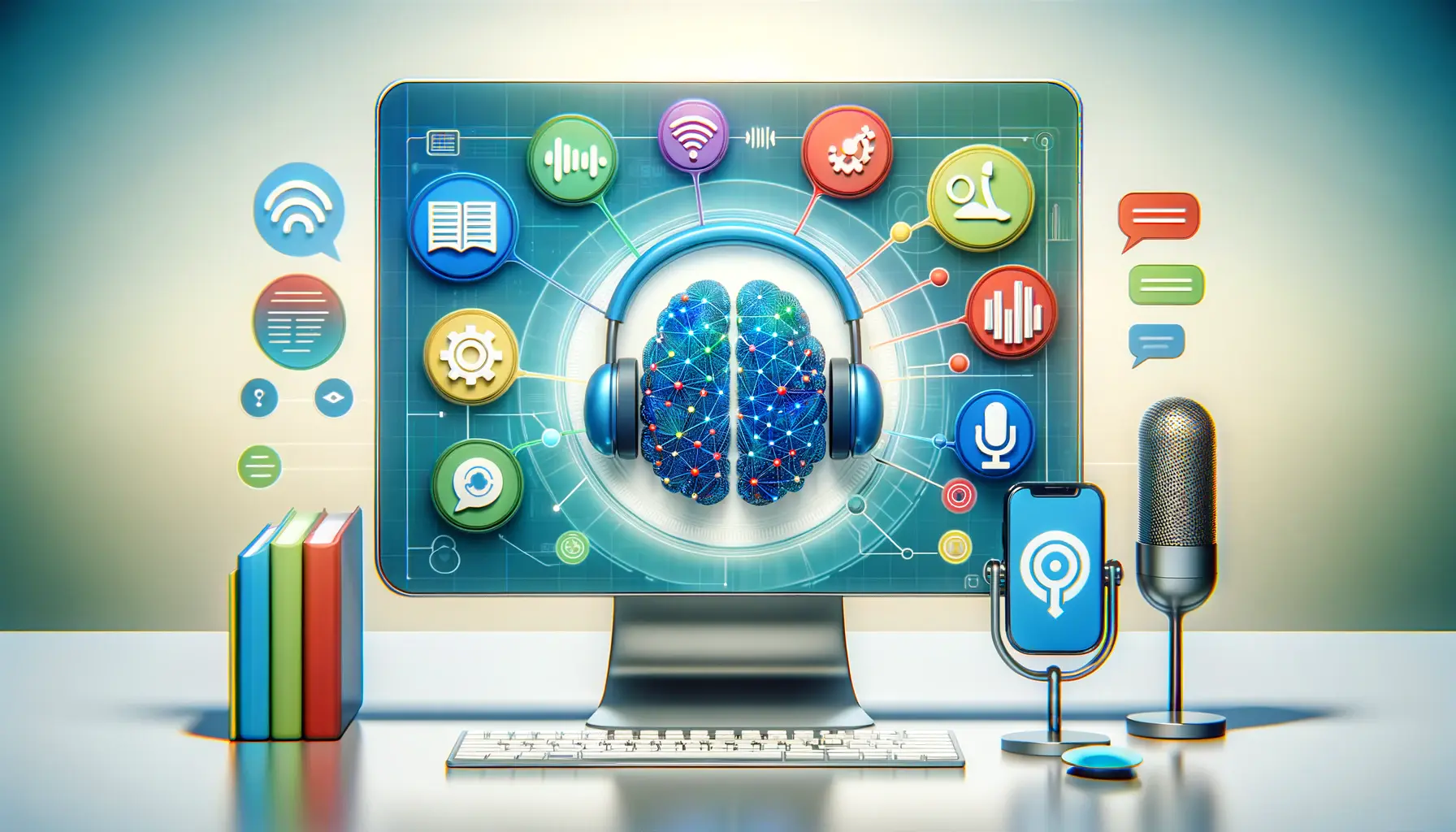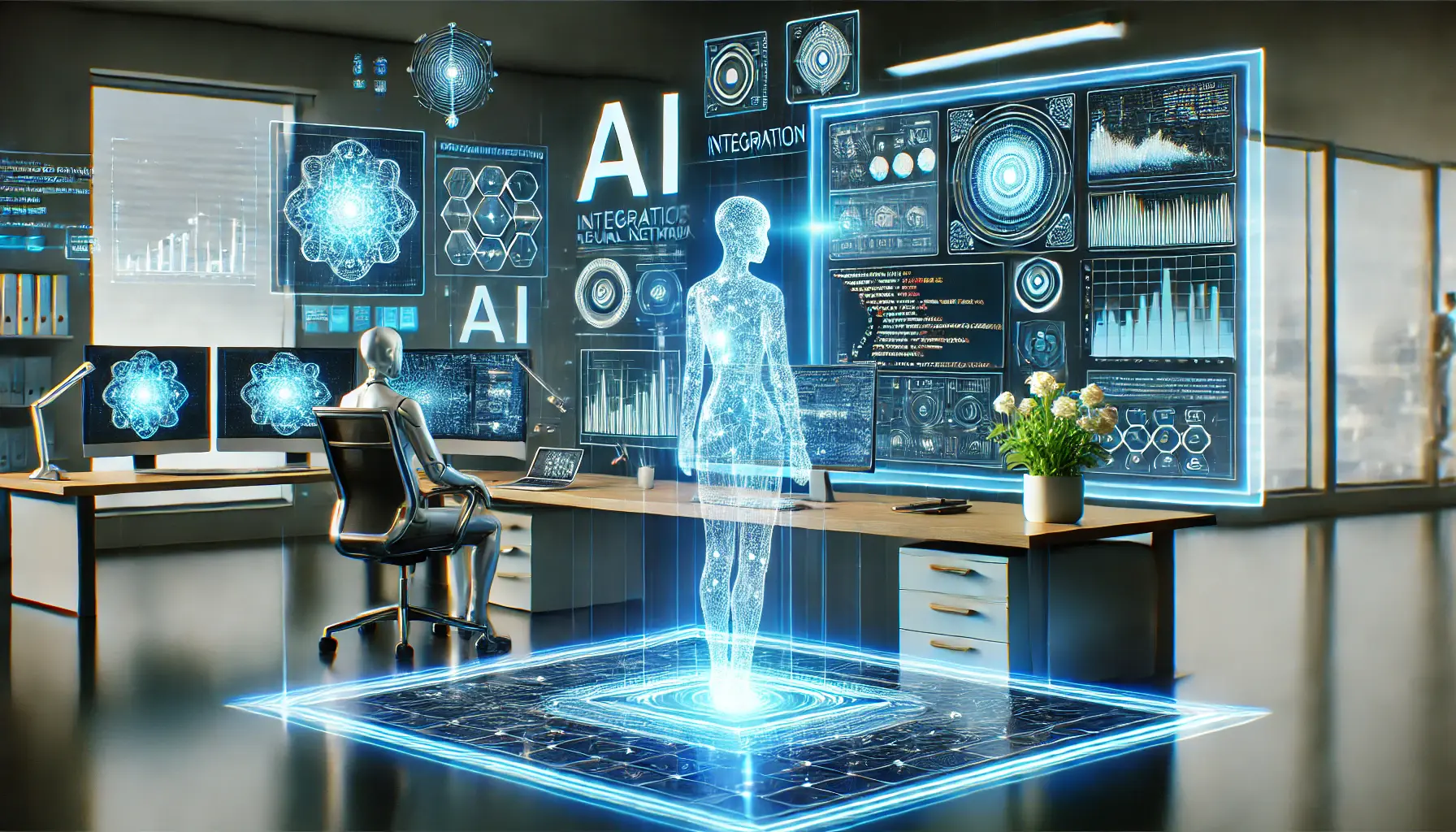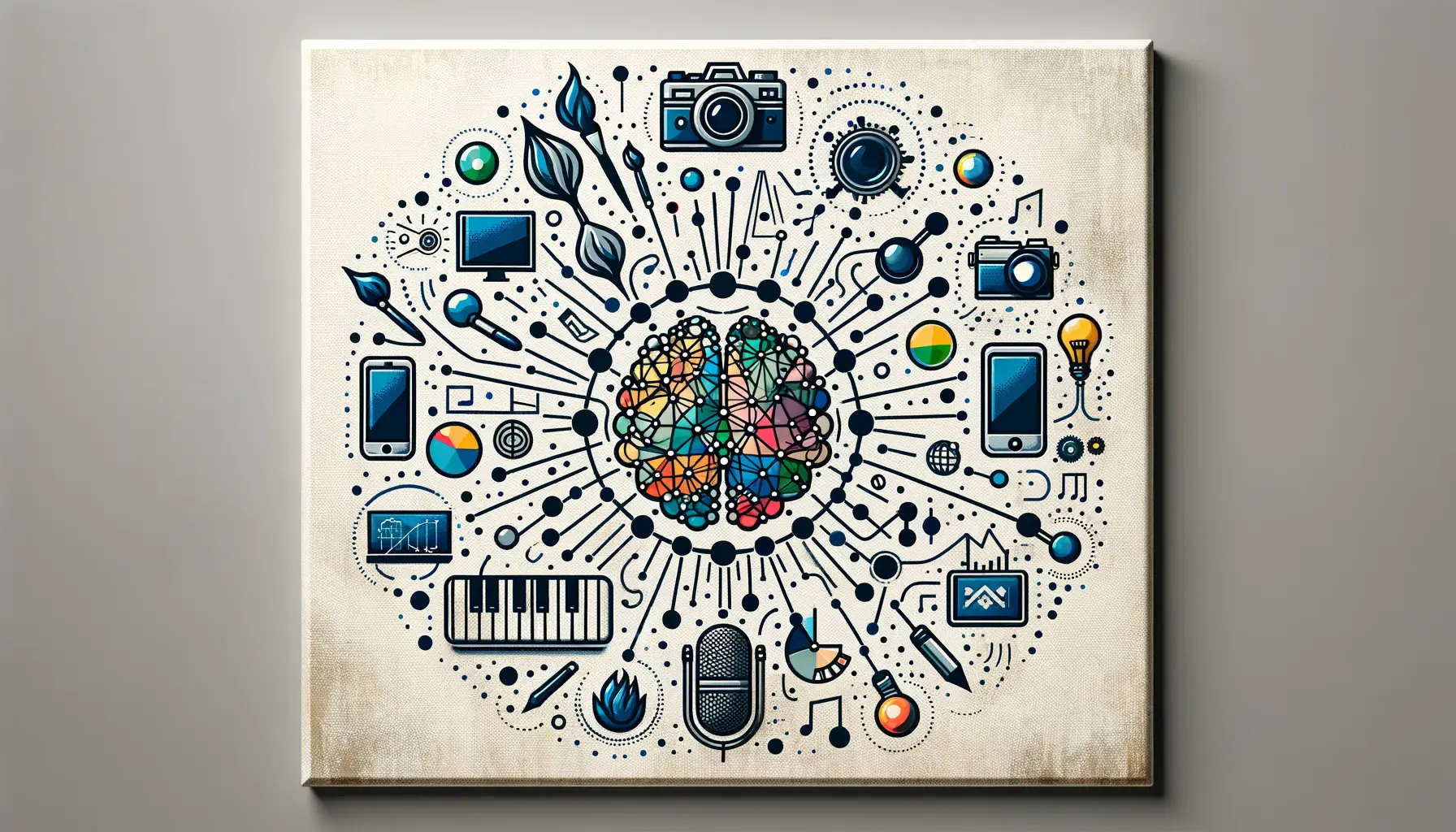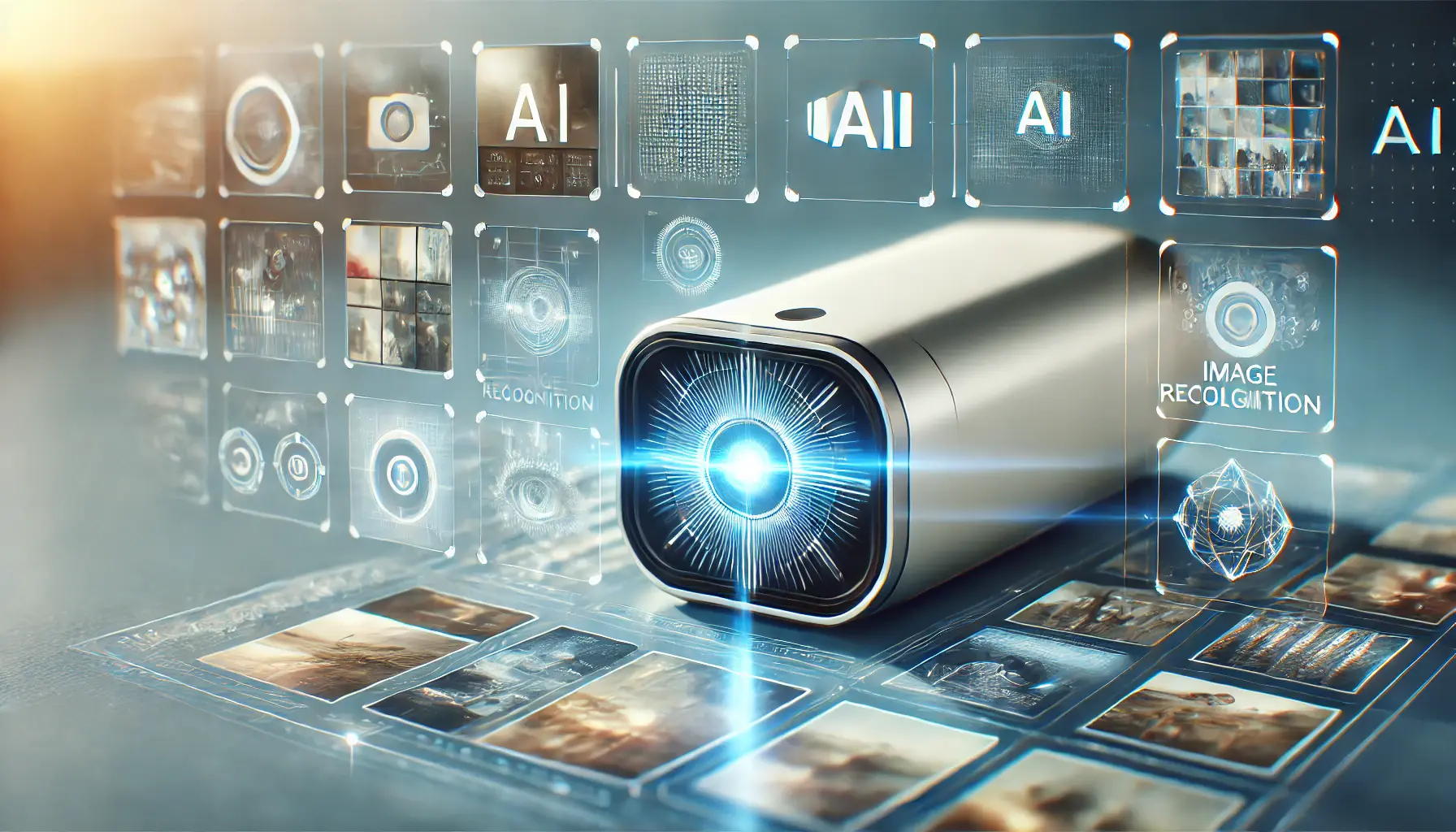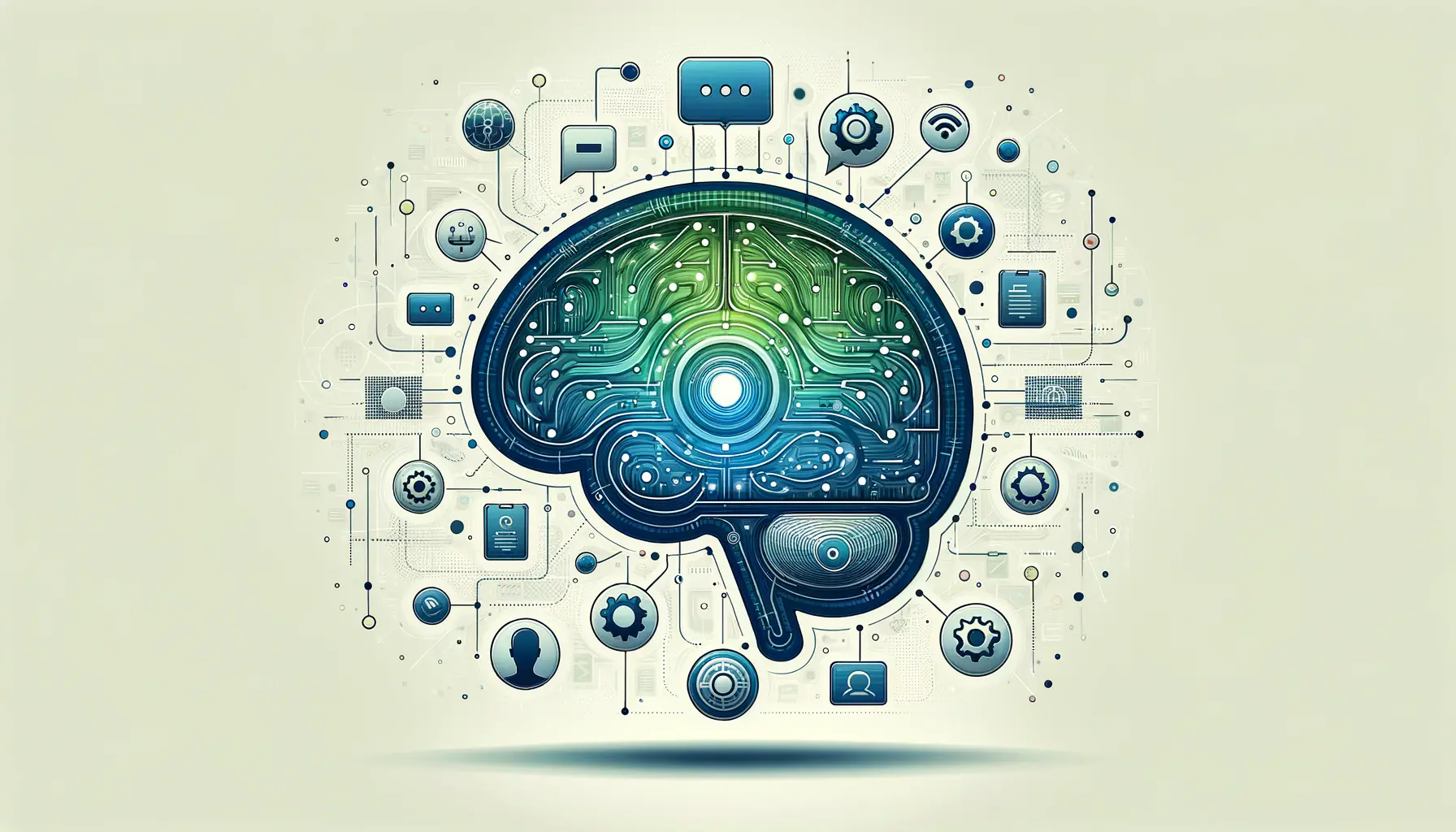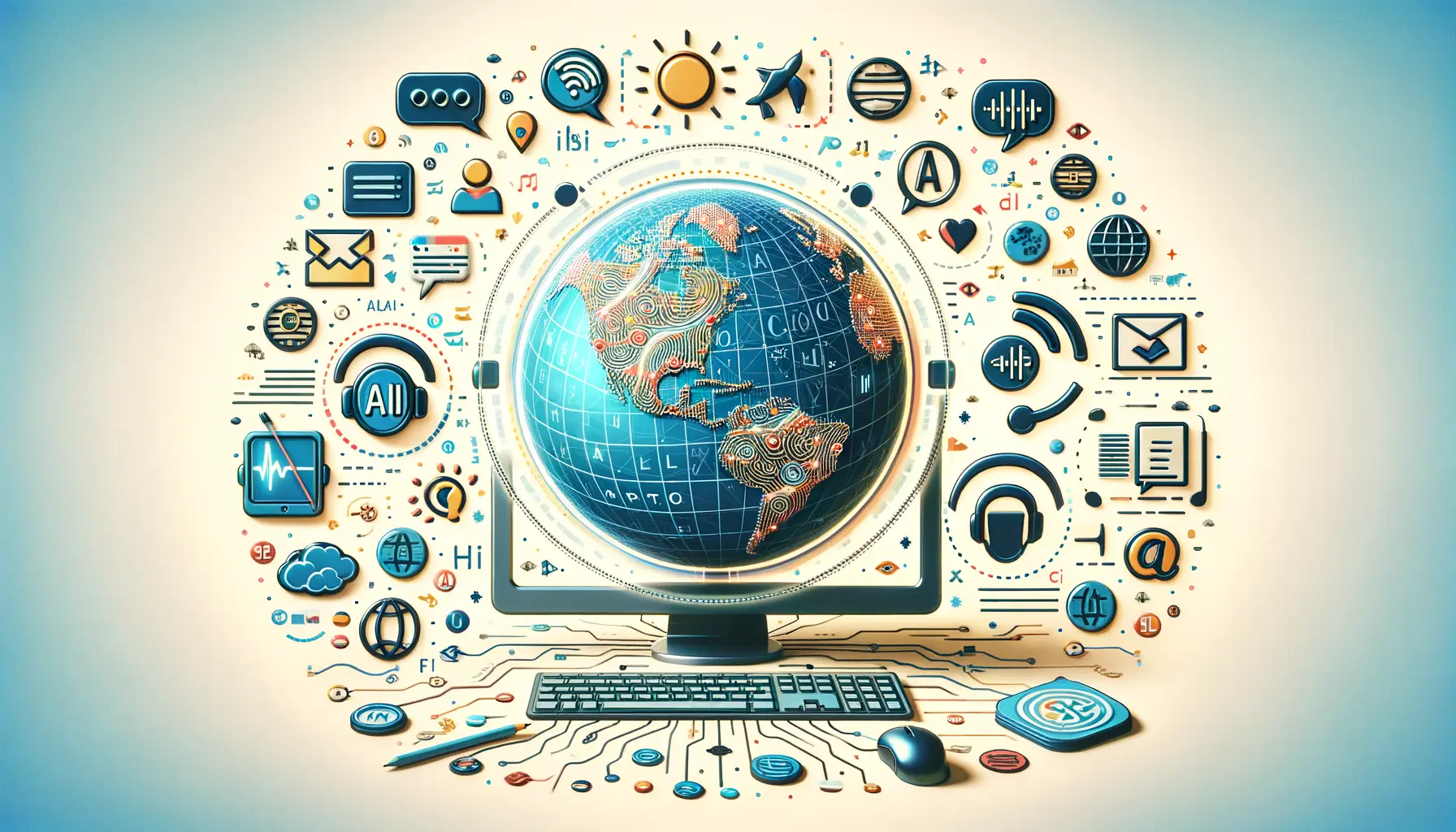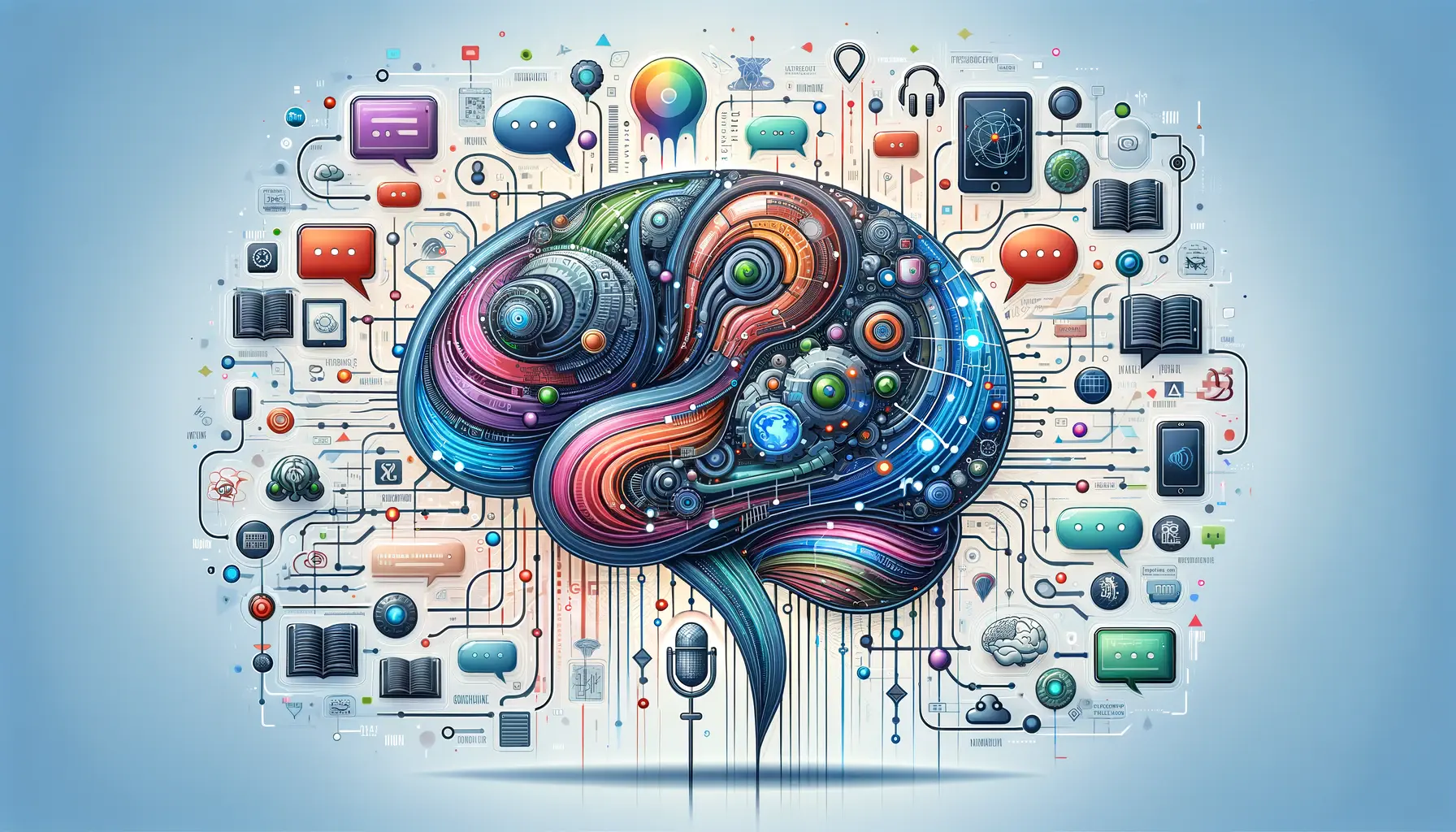The advent of ChatGPT 4 marks a significant milestone in the evolution of artificial intelligence, introducing a new era where technology transcends traditional boundaries.
This version of ChatGPT, developed by OpenAI, is not just an incremental update; it’s a leap towards a future where AI can understand and interact with the world in ways previously confined to the realms of science fiction.
The core of this advancement lies in its multimodal capabilities, which enable the model to process and generate responses based on a variety of input types, including text and images.
This feature represents a paradigm shift in how we interact with AI, making it more versatile and applicable across a broader spectrum of use cases.
At its heart, the multimodal nature of ChatGPT 4 is a testament to the rapid progress in machine learning and artificial intelligence.
By integrating different modes of communication, ChatGPT 4 can offer more nuanced and contextually relevant interactions.
This capability is not just a technical achievement; it’s a bridge towards more natural and intuitive human-computer interactions.
As we delve deeper into the multimodal functionalities of ChatGPT 4, we uncover a world where AI’s potential to understand, interpret, and respond to human needs is exponentially expanded, paving the way for innovations that could reshape industries, education, and entertainment.
- Understanding Multimodal AI
- The Evolution of ChatGPT’s Multimodal Capabilities
- Challenges and Solutions in Multimodal Learning
- Integrating Multimodal AI into Industries
- Enhancing User Experience with Multimodal AI
- Future Directions of Multimodal AI
- Empowering Education with Multimodal AI
- Charting the Future with Multimodal AI
- Multimodal ChatGPT 4 FAQs
Understanding Multimodal AI
What is Multimodal AI?
Multimodal AI refers to artificial intelligence systems that can understand, interpret, and generate responses based on multiple forms of input, such as text, images, and sometimes even audio or video.
This approach allows AI to process information more like humans do, using various senses to gain a comprehensive understanding of the world.
In the context of ChatGPT 4, multimodal capabilities mean that the model can not only read and write text but also analyze images, making it capable of engaging in more complex and varied interactions.
The significance of multimodal AI lies in its ability to provide more accurate and relevant responses by considering the context provided by different types of data.
For instance, when given a picture and a text-based question about that picture, ChatGPT 4 can analyze the image’s content and the question’s intent to generate a coherent and contextually appropriate answer.
This level of understanding and integration of different data types is a leap forward in making AI interactions more natural and effective.
Applications and Implications
The applications of multimodal AI are vast and varied, spanning across numerous sectors.
In education, for example, ChatGPT 4 can assist in creating interactive learning materials that combine text, images, and possibly even audio or video, to provide a richer learning experience.
In the healthcare sector, it could help in diagnosing diseases by analyzing medical images alongside clinical notes.
The potential for multimodal AI to revolutionize content creation, customer service, and even social media interactions is immense, offering more engaging and personalized experiences.
Moreover, the implications of multimodal capabilities extend beyond practical applications.
They also raise important considerations about AI ethics, privacy, and security.
As AI systems like ChatGPT 4 become more capable of understanding and generating content based on diverse inputs, ensuring the responsible use of this technology becomes paramount.
This includes addressing concerns related to data privacy, the potential for misuse, and the importance of developing AI in a way that benefits society as a whole.
The multimodal capabilities of ChatGPT 4 represent a significant step forward in AI, offering new possibilities for interaction and understanding between humans and machines.
The Evolution of ChatGPT’s Multimodal Capabilities
The journey towards developing ChatGPT 4’s multimodal capabilities has been marked by significant advancements in AI and machine learning.
This evolution reflects a broader trend in the field towards creating more adaptable and intelligent systems capable of handling complex tasks across different domains.
Understanding this progression not only highlights the technical achievements but also sheds light on the potential future directions of AI development.
From Text-Based to Multimodal Interactions
Initially, AI models like ChatGPT were primarily text-based, focusing on understanding and generating text in natural language.
These models were groundbreaking, offering insights into how machines could process and produce language in ways that felt surprisingly human.
However, the ambition to mimic human cognitive abilities more closely led to the exploration of multimodal AI, which integrates visual data processing with textual understanding.
The transition to multimodal capabilities required overcoming significant challenges, including how to effectively combine information from different sources and how to train models on diverse datasets.
The development of ChatGPT 4’s multimodal capabilities represents a culmination of these efforts, showcasing a model that can seamlessly integrate text and image data to understand and respond to complex queries.
Key Milestones in Multimodal AI Development
- Integration of Vision and Language Models: Combining visual and textual data processing models was a crucial step, allowing AI to not only “read” text but also “see” images, enhancing its understanding of context and content.
- Advancements in Deep Learning: Breakthroughs in deep learning algorithms and neural network architectures have been instrumental in enabling the processing of multimodal data, leading to more sophisticated and capable AI systems.
- Large-Scale Datasets: The availability of large and diverse datasets, encompassing both text and images, has been vital for training multimodal models, helping them learn from a wide range of examples and scenarios.
- Community and Open Source Contributions: The AI research community’s collaborative efforts, including open-source projects and shared research findings, have accelerated the development of multimodal capabilities, making advanced models like ChatGPT 4 possible.
The evolution of ChatGPT’s multimodal capabilities is a testament to the field’s rapid advancement and the collaborative nature of AI research.
As we look to the future, the ongoing development of multimodal AI promises to unlock even more innovative applications and ways for humans to interact with technology.
The continuous improvement of multimodal AI capabilities in models like ChatGPT 4 opens up new possibilities for AI applications, making interactions more natural and intuitive.
Challenges and Solutions in Multimodal Learning
The development of multimodal capabilities within ChatGPT 4 and similar AI systems is not without its challenges.
These obstacles range from technical hurdles to ethical considerations, each requiring innovative solutions and thoughtful approaches.
Understanding these challenges is crucial for advancing AI in a responsible and effective manner.
One of the primary technical challenges is the integration of different types of data.
Text, images, and other modalities each have unique characteristics and require different processing techniques.
Developing algorithms that can effectively combine these disparate data types into a cohesive understanding of the world is a complex task.
Additionally, ensuring that AI models are trained on diverse and representative datasets is essential for avoiding biases and ensuring that the AI’s responses are accurate and fair.
Technical Hurdles and Innovations
- Data Fusion: Combining text and image data in a way that allows the AI to understand the relationship between them is a significant challenge. Solutions involve advanced neural network architectures that can process and relate information from both modalities.
- Model Training: Training multimodal AI systems requires vast amounts of data and significant computational resources. Innovations in training techniques and the use of more efficient algorithms have helped mitigate these issues.
- Handling Ambiguity: Multimodal inputs can sometimes provide conflicting information, leading to ambiguity. Developing models that can weigh the reliability of different data sources and make informed decisions is a key area of research.
Ethical Considerations and Approaches
- Data Privacy: The use of personal images and information raises concerns about privacy. Implementing strict data handling and privacy policies is essential for protecting users’ information.
- Bias and Fairness: AI systems can inadvertently perpetuate biases present in their training data. Efforts to create more diverse and inclusive datasets, along with algorithms that can identify and correct for bias, are critical for ethical AI development.
- Transparency and Accountability: As AI systems become more complex, ensuring transparency in how decisions are made and accountability for those decisions is increasingly important. Developing explainable AI models and establishing clear guidelines for AI use are steps towards addressing these concerns.
The challenges of developing multimodal AI like ChatGPT 4 are significant, but they are matched by the potential benefits of these technologies.
Through ongoing research, collaboration, and a commitment to ethical principles, the obstacles can be addressed, paving the way for more advanced and responsible AI systems.
Addressing the technical and ethical challenges of multimodal AI is essential for realizing its full potential and ensuring its benefits are accessible to all.
Integrating Multimodal AI into Industries
The integration of multimodal AI, exemplified by ChatGPT 4, into various industries is transforming how businesses operate, innovate, and interact with their customers.
The ability of AI to understand and process multiple forms of data simultaneously opens up new avenues for automation, personalization, and efficiency.
This section explores the impact of multimodal AI across different sectors, highlighting the versatility and potential of this technology.
In the realm of customer service, for instance, multimodal AI can analyze text inquiries alongside images sent by customers to provide more accurate and helpful responses.
In healthcare, combining patient records with medical imaging through AI can lead to faster and more precise diagnoses.
The applications are as diverse as the industries themselves, each finding unique ways to harness the power of multimodal AI.
Revolutionizing Customer Interactions
- Enhanced Customer Support: By understanding both textual and visual customer queries, AI can offer more comprehensive and accurate support, reducing response times and improving customer satisfaction.
- Personalized Shopping Experiences: In retail, AI can analyze customers’ preferences through text and images to recommend products that better match their tastes and needs, enhancing the shopping experience.
Advancing Healthcare Diagnostics
- Improved Diagnostic Accuracy: AI’s ability to analyze medical texts and images together can help healthcare professionals diagnose conditions more accurately and swiftly, potentially saving lives.
- Personalized Treatment Plans: By integrating patient history with current medical data, AI can assist in creating more personalized and effective treatment plans, improving patient outcomes.
Transforming Creative Industries
- Content Creation: In the media and entertainment sectors, AI can generate rich content by understanding and integrating textual and visual inputs, opening up new possibilities for storytelling and content creation.
- Design and Visualization: For architects and designers, AI that understands both specifications (text) and visual concepts can significantly streamline the design process, from initial concepts to final visualizations.
The adoption of multimodal AI like ChatGPT 4 across various industries not only enhances operational efficiencies but also fosters innovation, offering new ways to engage with customers and tackle complex problems.
As businesses continue to explore the capabilities of multimodal AI, the potential for transformative change grows, promising a future where AI’s impact is woven into the fabric of every industry.
The integration of multimodal AI into industries represents a significant leap forward, offering unprecedented opportunities for innovation and improvement across sectors.
Enhancing User Experience with Multimodal AI
The advent of multimodal AI technologies, particularly with innovations like ChatGPT 4, has ushered in a new era of user experience (UX) design.
By leveraging the ability to process and understand multiple types of data inputs, these AI systems can offer more intuitive, engaging, and personalized interactions.
This capability significantly enhances the way users interact with digital products and services, making experiences more seamless and aligned with human behavior and expectations.
At the core of enhancing UX with multimodal AI is the principle of creating more human-like interactions.
Whether it’s through voice commands, text inputs, or image uploads, users can communicate with AI in a way that feels natural to them.
This flexibility in interaction modes not only improves accessibility but also increases the satisfaction and efficiency of user experiences across various platforms and applications.
Personalization at Scale
- Adaptive Interfaces: Multimodal AI can analyze user behavior and preferences across different interaction modes to adapt interfaces and content in real-time, creating a more personalized user experience.
- Context-Aware Assistance: By understanding the context of user requests through text, voice, and images, AI can provide more relevant and timely assistance, enhancing the effectiveness of digital assistants and support services.
Breaking Down Barriers
- Accessibility Improvements: Multimodal AI opens up new possibilities for users with disabilities by offering alternative ways to interact with technology, such as voice commands for those who cannot use traditional input devices or image recognition for users with visual impairments.
- Language and Cultural Inclusivity: The ability of AI to understand and generate responses in multiple languages, coupled with its understanding of cultural nuances through visual cues, makes digital experiences more inclusive and accessible to a global audience.
Creating Engaging Content
- Dynamic Content Generation: AI’s ability to combine text and images creatively can lead to the generation of dynamic and engaging content, enhancing the appeal of websites, apps, and social media platforms.
- Interactive Experiences: Multimodal AI enables the creation of interactive experiences that respond to user inputs in various forms, making digital interactions more engaging and memorable.
The impact of multimodal AI on user experience is profound, offering a glimpse into a future where digital interactions are more natural, intuitive, and satisfying.
As technology continues to evolve, the potential for further enhancing UX with AI is vast, promising even more innovative and user-friendly digital environments.
The role of multimodal AI in enhancing user experience is transformative, making digital interactions more personalized, accessible, and engaging.
Future Directions of Multimodal AI
The exploration of multimodal AI, particularly through advancements like ChatGPT 4, is far from reaching its zenith.
The future of multimodal AI holds promising directions that could further revolutionize how we interact with technology, solve complex problems, and understand the world around us.
As we look ahead, several key areas emerge where multimodal AI is expected to evolve and expand its influence.
One of the most exciting prospects is the continued improvement in the sophistication and accuracy of AI’s understanding of different data types.
This evolution will likely lead to even more seamless and intuitive interactions between humans and machines, with AI systems capable of interpreting complex multimodal inputs in real-time.
Furthermore, as AI becomes more integrated into our daily lives, its potential to personalize experiences and provide support in a variety of contexts will only grow.
Advancements in Natural Interaction
- Real-Time Processing: Future multimodal AI systems will aim for real-time processing of multimodal inputs, allowing for instantaneous responses and interactions that feel more natural and fluid.
- Enhanced Sensory Integration: The integration of additional sensory inputs, such as touch and smell, could further enhance AI’s understanding of the world, leading to more immersive and realistic interactions.
Expanding Applications and Accessibility
- Global Accessibility: As multimodal AI becomes more sophisticated, its ability to break down language and cultural barriers will enhance, making technology accessible to a wider global audience.
- Diverse Industry Applications: The versatility of multimodal AI will see it being applied in new and diverse industries, from environmental monitoring to space exploration, where its ability to process complex data sets can provide invaluable insights.
Addressing Ethical and Privacy Concerns
- Enhanced Privacy Measures: With the increasing capabilities of AI, developing more robust privacy protections will be crucial to ensure that users’ data is handled responsibly.
- Ethical AI Development: The future of multimodal AI will also focus on ethical considerations, ensuring that AI development benefits society and minimizes potential harms.
The trajectory of multimodal AI is set towards creating more intelligent, intuitive, and inclusive technologies.
By addressing the challenges and harnessing the opportunities, the future of multimodal AI promises to bring about a new era of innovation and interaction that could redefine our relationship with technology.
The future of multimodal AI is bright, with advancements that promise to make our interactions with technology more natural, intuitive, and inclusive.
Empowering Education with Multimodal AI
The integration of multimodal AI into the educational sector stands as a testament to the transformative potential of this technology in enhancing learning experiences.
ChatGPT 4, with its advanced multimodal capabilities, is at the forefront of this revolution, offering innovative ways to support both educators and students.
By leveraging AI’s ability to understand and process various data types, educational content can be made more accessible, engaging, and tailored to individual learning styles.
One of the key advantages of multimodal AI in education is its ability to provide a more interactive and immersive learning environment.
Whether through visual aids, interactive simulations, or personalized feedback, AI can cater to the diverse needs of learners, making education more inclusive and effective.
This adaptability not only supports traditional learning environments but also opens up new possibilities for remote and self-paced learning.
Creating Interactive Learning Materials
- Visual and Textual Integration: By combining text with relevant images, diagrams, and videos, AI can create rich, multimedia learning materials that cater to different learning preferences.
- Adaptive Learning Paths: AI can analyze a student’s progress and adapt the learning materials in real-time, offering a personalized learning experience that optimizes understanding and retention.
Enhancing Teacher Support
- Automated Grading and Feedback: AI systems can assist teachers by providing automated grading of assignments and personalized feedback to students, saving time and allowing for more focused instructional time.
- Resource Generation: Teachers can leverage AI to generate educational content, quizzes, and interactive exercises, enriching the curriculum and enhancing the learning experience.
Supporting Diverse Learning Needs
- Accessibility Features: Multimodal AI can offer alternative ways for students with disabilities to engage with learning materials, such as through voice commands or image recognition, making education more accessible.
- Language Learning: For students learning new languages, AI can provide immersive language experiences, combining textual, auditory, and visual cues to enhance language acquisition and comprehension.
The potential of multimodal AI to empower education is immense, offering tools and methodologies that can revolutionize how we teach and learn.
As this technology continues to evolve, its role in education is set to become even more significant, promising a future where learning is more personalized, engaging, and accessible to everyone.
Multimodal AI, exemplified by ChatGPT 4, is reshaping the educational landscape, offering new ways to engage students and support educators in creating more effective and inclusive learning environments.
Charting the Future with Multimodal AI
The exploration and implementation of multimodal AI, particularly through advancements in technologies like ChatGPT 4, herald a new era in human-computer interaction.
This journey into the multimodal capabilities of AI is not merely a technical evolution; it represents a paradigm shift in how we envision the role of AI in society.
From enhancing user experiences to transforming industries, and from empowering education to addressing complex challenges, the impact of multimodal AI is profound and far-reaching.
The Multifaceted Impact of Multimodal AI
As we have seen, the multimodal capabilities of ChatGPT 4 extend across various domains, each benefiting from the AI’s ability to process and understand multiple forms of data.
This versatility not only makes AI more accessible and useful in everyday applications but also opens up new avenues for innovation and problem-solving.
The integration of text, images, and potentially other sensory inputs in the future, promises a more intuitive and natural interaction with technology, mirroring the multifaceted way humans perceive and engage with the world.
Towards a More Inclusive and Ethical AI
Moreover, the development of multimodal AI like ChatGPT 4 brings to the forefront the importance of ethical considerations and inclusivity in technology.
As AI systems become more integrated into our lives, ensuring they are developed and used responsibly becomes paramount.
This includes addressing privacy concerns, mitigating biases, and ensuring that the benefits of AI are accessible to all, regardless of language, ability, or background.
The future of multimodal AI, therefore, is not just about technological advancements but also about fostering a more inclusive and ethical digital world.
Embracing the Potential of Multimodal AI
- The ability to process and integrate multiple data types opens up unprecedented opportunities for enhancing user experiences, making interactions with technology more natural and intuitive.
- In industries ranging from healthcare to education, multimodal AI can drive innovation, improve efficiencies, and offer solutions to complex challenges that were previously out of reach.
- As AI continues to evolve, the focus on developing ethical, transparent, and privacy-preserving models will ensure that the advancements in AI technology benefit society as a whole.
In conclusion, the multimodal capabilities of ChatGPT 4 represent a significant leap forward in the field of artificial intelligence.
By embracing these capabilities, we can unlock new possibilities for innovation, interaction, and understanding.
The journey of multimodal AI is just beginning, and its potential to reshape our world is limited only by our imagination and our commitment to developing technology that is inclusive, ethical, and beneficial for all.
Multimodal ChatGPT 4 FAQs
Explore commonly asked questions about the multimodal capabilities of ChatGPT 4, providing insights into its functionality and applications.
ChatGPT 4 is considered multimodal because it can understand and generate responses based on both text and image inputs, offering a more versatile interaction.
Multimodal input allows AI to process information more like humans, using multiple senses, which enhances its understanding and response accuracy.
ChatGPT 4 can analyze a wide range of image types, but its effectiveness may vary depending on the image’s complexity and clarity.
While ChatGPT 4’s multimodal capabilities are a significant advancement, access may depend on the platform or service provider’s implementation.
ChatGPT 4 is designed with privacy in mind, ensuring that data, including images and text, is processed securely to protect user information.
Limitations may include challenges in interpreting highly abstract images or texts and the need for continual learning to improve accuracy.
Developers can integrate ChatGPT 4’s multimodal features using APIs provided by OpenAI, allowing for customization based on specific application needs.
Future enhancements may focus on improving real-time processing, expanding data type compatibility, and enhancing user interaction experiences.
